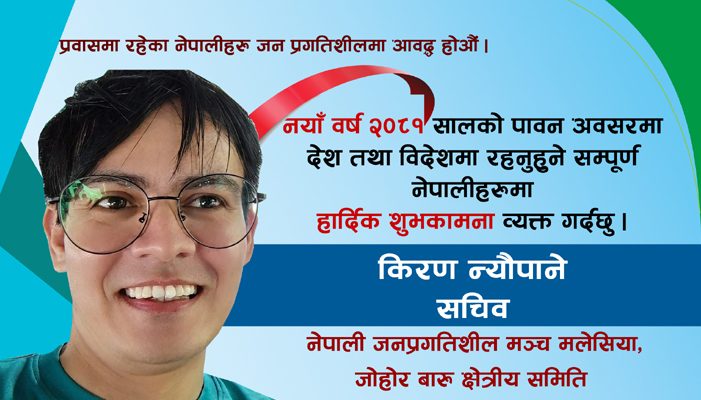
I. INTRODUCTION
1.1. Concept
Financial literacy is the ability to understand how money works in the world: how someone manages to earn or make it, how that person manages it, how he/she invests it and how that person donates it to help others. More specifically, it refers to the set of skills and knowledge that allows an individual to make informed and effective decisions with all of their financial resources (Wikipedia).Financial literacy is a path to sustainability and has an important role in ensuring the financial sustainability of individuals, families, enterprises and national economies (Swiecka, Yesilda, Ozen, & Simon, 2020). It is a combination of awareness, knowledge, skill, attitude and behavior necessary to make sound financial decisions and ultimately achieve individual financial wellbeing (NRB, 2020). In other words, it consists of economic activities related with earning, saving, investing and effective utilization by human beings. Family income affects the level of financial literacy of students with the amount of income being inversely proportional to the financial knowledge (Ιlias & Helen, 2019). Financial literacy is a combination of awareness, knowledge, skill, attitude and behavior necessary to make sound financial decisions and ultimately achieve individual financial well-being (OECD, 2017, pp. 13).Increasing financial literacy and capability promotes better financial decision-making, thus, enabling better planning and management of life events such as education, housing purchase, or retirement. This is particularly more relevant for college students (Mahdzan &Tabiani,2013). Financial literacy such as health or general literacy might be conceptualized with two main dimensions: understanding personal finance knowledge and using it. Hence, it could be described as measuring how well an individual can understand and use personal finance-related information (Huston, 2010, pp.306).
1.2. Statement of the Problem
Swamyand Priya(2017) concluded that financial literacy was highest among business students. Further, they revealed that formal education is the main source of financial literacy of postgraduate students, followed by parents, the media, and peers. Servon and Kaestner (2008, p.273) defines financial literacy as a person’s ability to understand and make use of financial concepts.The problem is that teachers, administrators, parents, business owners, and community members need to know if a personal finance level is valuable enough to enhance for economic development in Nepal.Further, there should be added program to improve financial literacy program from college level to society in Nepal or not. This research is an important to identify the gap therein. This study, therefore, seeks to research into the level of financial literacy among college students in Nepal.
1.3. Objectives of the study
The specific objectives of the study are as follows:
i. To find out the general financial knowledge, savings and borrowing.
ii. To find theimpact of financial knowledge on their opinions
iii. To examine the impact of financial knowledge on their personal financial decision.
II. REVIEW OF LITERATURE
Walt, F., & Fouche., Jaco (2017) examined study with the objective to determine undergraduate students’ financial literacy at a public university. The participants’ knowledge regarding the issues relating to general financial literacy was observed to be low. They also performed poorly in terms of banking and taxation and financial planning, interest rates and general inflation.
Abdullah et al. (2017) concluded that family influence has the highest significant effect on financial literacy compared to the personality characteristics (financial attitude and financial behavior) and financial knowledge.
Ιlias and Helen (2019) analyzed a survey on “Financial Literacy of Graduate High School Students” intending to measure the level of financial literacy of high school students in all questions and each basic field of financial knowledge. The basic fields of financial knowledge are 1) Income, 2) Programming and Money Management, 3) Credit and Debit, and 4) Savings and Investments. The survey concluded that the level of financial literacy of high school students was low in comparison with the corresponding high school students in other countries from similar surveys conducted.
Thapa and Nepal (2015) discussed “Financial Literacy in Nepal: A Survey Analysis from College Students” to examine their financial literacy; the impact of demographic, educational, and personality characteristics on financial literacy. Results show that most of the students have an average level of financial knowledge but they lack understanding of credit, taxes, share market, financial statement, and insurance. The influence of parents’ attitudes on students towards savings changes saving habits positively. Further, the research identified income, age, a stream of education, types of college, and attitude of students as determinants of financial knowledge; and financial knowledge is unaffected by gender, university affiliation, financial behavior, and influence. It is concluded that college students have a basic level of financial knowledge.
Sarigul(2014) examinedon “A Survey of Financial Literacy Among University Students” with the objectives to determine the level of financial literacy among university students, to find out the relationship between financial literacy and student characteristics, and to provide an information resource that may assist with the development. In this study, a survey instrument that includes 29 items such as saving and spending, banking, risk and insurance, investing, and general financial knowledge levels of the participants. He argued that the percentages of correct answers from the students’ who live in private households were lower than the others for the general knowledge section and the entire survey. Further, it is concluded that students’ parent’s education positively influenced on student’s financial knowledge.
Chen and Volpe (1998) explored a survey of 924 US college students to examine theirpersonal financial literacy, the relationship between the literacy and students’characteristics, and impact of the literacy on students’ opinions and decisions.The results show that respondents answered about 53 per cent of questionscorrectly. The study found also that women pursuing non-businesscareers and with little work experience have lower levels of financial literacy.
III. Research Design &Methodology
A descriptive research method has been applied to analyze and interpret the quantitative and qualitative data. A judgmental sampling method is followed where60 business students were selected from total campus students of 896. The selected students were from business students expecting they have good financial knowledge than other non-business students. This study is mainly based on primary data collected from field surveys by using a structured questionnaire where each individual selected in the sample have been given questions separately. The data are discrete nature collected from 15 male students and 45 female students.The questions were short and specific in a structured questionnaire therein in which replies were filled by selected students.
IV. DATA ANALYSIS AND INTERPRETATION
4.0 Demographic characteristics
On their demographic characteristics, the results show that most of the students in the survey are female students representing about 75percent of the sample size with the remaining 25percent being male students. In examining the respective ages of the students in the survey, the results reveal that 45percent of the students are 20 years and below whilst 55percent are between the ages of 21 to 25 years. Based on the students’ ages, it can be inferred that the students are in their youthful age and hence there is the tendency to be influenced by their peers in their decision making. The age groups are cable enough for taking financial decision.
4.1 Exposure to financial issues
On the exposure to financial issues, the results show that 78.33percent of the students lived in the capital town whilst 21.67percent of the students were not. The majority of the students are female living in the capital town of Dhading district.Notwithstanding, the results show that on fathers’ education, 91.67percent either have no formaleducation or have been educated up to JHS/Middle School education level whilst 8.33percent have up to higher studies. The results show that on mothers’ education, 93.33percent either have no formal education or have been educated up to JHS/Middle School education level whilst 6.67percent have up to higher studies.
4.1 Percentage Response of Participants’ Knowledge in Financial Literacy
I. General Financial Information
a. Personal finance literacy
The findings showthat male students have good personal financial literacy.
b. Personal financial planning
The majority female students gave correct answer about personal financial planning.A personal budget.Majority of the students didn’t know how personal budget helps them. Only 26.67 percent of the total respondents gave the correct answer.
c. Asset Liquidity
This shows that students have good knowledge of liquid assets. 81.67 percent of the total students give the correct answer.
d. Savings interest
They have not had satisfactory knowledge about the interest rate. Only 45 percent of the students give the correct answer. 45 percent of the students gives incorrect response. This shows very poor results regarding the financial literacy level of BBS students. Therefore, the general financial literacy level of students from the commerce group is very poor.
II. Saving and Borrowing Knowledge
a. Most Interest Paid Account
In the above 68.33 percent, respondents give correct answers whilst 30 percent give an incorrect answer. 1.67 percent of the total students don’t know about the answer.
b. Guarantee of Loan
In the above 70 percent, respondents give correct answers whilst 26.67 percent give an incorrect answer. 3.33 percent of the total students don’t know about the answer.
c. Higher Interest Rate
In the above 45.00 percent, respondents give correct answers whilst 53.33 percent give an incorrect answer. 1.67 percent of the total students don’t know about the answer.
d. An Overdraft Accounts
In the above table, 68.33 percent of respondents give correct answers whilst 20.00 percent give an incorrect answer. 11.67 percent of the total students don’t know about the answer.
e. Credit Criteria
In the above 53.33 percent respondents give correct answer whilst 46.67.00 percent give incorrect answer. The mean of correct answer is 61 percent out of total students from Saving and Borrowing section. This shows satisfactory result regarding the financial literacy level of BBS students. Therefore, saving and borrowing level of students from commerce group is satisfactory.
4.2 Overall mean(I+II)=49.84percent
The initial aspect looks at the scores that are correct, incorrect, and don’t know. The second aspect emphasizes the respective questions asked under each of the financial literacy components namely; general financial knowledge and savings and borrowing. This is to ascertain the understanding of the students of the financial literacy components. In comparison to Chen and Volpe (1998) benchmark of financial literacy, the percentage correct scores are regrouped into three categories: over 80percent (Highest), 60 –79percent (Medium) and below 60percent (Low) to make an informed decision on the student’s level of financial literacy. In this survey, the overall mean from both section: general financial section and borrowing section is 49.84percent which is a very low level of financial literacy. it is not enough to cushion their understanding of money management issues in our current financial world.
4.3 The Impact of Students’ Financial Knowledge on Their Opinions.
The researcher further tries to ascertain how student’s financial knowledge influences their opinions. The financial knowledge as per students’ personal financial opinion categorized into two parts male and female.
a. Students maintaining adequate financial records
Both male and female respondents equally feel important to financial records. They are both 80 percent of each group of male and female respondents.
b. Students spending less than their income
Majority of the students feel it is important for spending less than income. In comparison between male and female, female respondents feel more important to financial records.
c. Students planning and implementing regular investment program
It is found that 8.34percent of the total students feel it is unimportant planning and implementing regular investment program whilst 13.33 percent of total students feel it is not sure. 78.33 percent of the students feel it is an important planning and implementing a regular investment program. In comparison between males and females, male respondents feel more important to financial records. Out of them, male students are 80 percent and female students are 77.78 percent planning and implementing.
4.4 PERSONAL FINANCIAL MANAGEMENT PRACTICES
a. Students setting aside money each month for savings
38 percent of the students think it is important to set aside money each month for saving. 43.34 percent of the total student think that it is not important to set aside money each month for saving. Remaining 18.33 percent of the students are not sure about setting aside money each month for savings.
b. Students set aside money for future needs/wants
Majority of the students think it is important to set aside money for future needs/wants. 30 percent of the total student think that it is not important to set aside money for future needs/wants. Remaining 8.33 percent of the students are not sure about money for future needs/wants.¬¬¬
c. Compare prices when shopping for major expenses
46.67 percent of the students think it is important to compare prices when shopping for major expenses. 40 percent of the total student think that it is not important to compare prices when shopping for major expenses. Remaining 13.33 percent of the students are not sure about comparing prices when shopping for major expenses.
d. Use a spending plan or budget
50 percent of the students think it is important to use a spending plan or budget.
e. Keep track of my expenditure and income
Majority of the the students think it is important to about Keeping track of my expenditure and income.
4.5 THE IMPACT OF STUDENTS’FINANCIAL KNOWLEDGE ON THEIRPERSONAL FINANCE DECISIONS
a. Safest place to keep money
It is very important to decide to keep money as safe. In this test, 48.33 percent give correct decision and 51.67 percent give incorrect decision.
b. Benefit Level for emergencies
Majority of the Students give the incorrect correct answer.
c. Ways to improve financial health
Students are asked about ways to improve financial health with five options. Among them, 81.67 percent of students give the correct answer, and the remaining 18.33 percent give an incorrect answer. We find that 45.56 percent is the average mean percent of the correct answer of students’ financial knowledge on their personal financial decisions where students want to improve their financial knowledge. These findings can be attributed to the fact that most parents are busy and hence do not create the opportunity for their wards to discuss financial issues with them.
V. CONCLUSION AND SUGGESTION
Conclusion
The study examined how students’ knowledge influences his or her opinions and decisions on personal financial behaviors.Majority of the respondents were female students. They were 75 percent out of 60 students. The data showed that 78.33percent of the students lived in the capital town whilst 21.67percent of the students were not.Male students found to bebetterin personal financial literacy than female students. The observation of parents’ education shows that the majority of them didn’t not have higher education. Student didn’t know how personal budget helps them.In comparison to Chen and Volpe (1998) benchmark of financial literacy, the percentage correct scores are regrouped into three categories: over 80percent (Highest), 60 –79percent (Medium) and below 60percent (Low) to make an informed decision on the student’s level of financial literacy. It is concluded that students had poor knowledge of personal financial planning.The overall students’ performance was 49.84percent which is below the benchmark of Chen, Volpe, and Pavlicko (1998).
Suggestion
The priority should be given to female students for financial literacy. Senior aged and middle people should be educated by various financial literacy programs so that they could educate their children family. The findings from this study indicated some doubts about the curriculum used in bachelor level students with respect to financial literacy it is because financial literacy level of students in bachelor level is below average level. The government is suggested to revise the course to include a basic financial literacy course. The time is due for stakeholders in the educational system of the country to introduce more and elaborated personal finance courses in the academic curriculum to expose the students to the basic financial concepts which would enable them to improve their financial decision making later in life. Also, since most of the students want to learn through the schools, on the job training, and financial institutions, it is recommended that the students are given the chance to undertake internship courses with the financial institutions to build their financial knowledge capacity. Students should be aware of budgeting and financial planning. They shout to get knowledge about saving and investment chains. Financial literacy programs even in commerce students need to be launched to make them aware. School and college should take them initiation it is because the education system to literate students financially is lacking. The bank and financial institutions are operating financial literacy programs. Central bank of Nepal has issued a circular to allocate some budget to financial literacy. Therefore, banks and financial institutions should initiate such programs from the school and college level to the community and government level. The students are the future and foundation for a civilization of people. Therefore, it is very important to make students capable of taking an appropriate financial decision.There is a need for financial literacy training amongstudents. This should focus on content areas where they lack financial literacy, inorder to ensure that students experience financial well-being during the adultyears.
REFERENCES
Abdullah, S., Mohammed, N.H., Salleh, S.M., Rashid, K.M., Kamal, S.S.S.M.K. (2017). Financial Literacy among UiTM’s Students.Journal of Applied Environmental and Biological Sciences,7(5S)31-36.
Chen, H. and Volpe, R.P. (1998). An analysis of personal financial literacy among collegestudents. Financial Services Review,7, 107-28.
Huston, S.J., (2010). The American Council on Consumer Interests. The Journal of Consumer Affairs,44(2).
Ιlias, Seitanidis & Helen, Tsakiridou.(2019). Financial Literacy of Graduate High School Students.American Journal of Educational Research, 7, (3), 232-236.
Mahdzan, N.S., Tabiani, S. (2013). The Impact of Financial Literacy on Individual Saving: An Exploratory Study in the Malaysian Context.Transformations in Business & Economics,12(28),41- 55.
NRB, (2020). Financial Literacy Framework.https://www.nrb.org.np/.
OECD. (2017).G20/OECD INFE Report on Adult Financial Literacy in G20 Countries.
Peng, T., Bartholomae, S., Fox, J., and Cravener, G. (2007). The impact of finance education delivered in high school and college courses. Financial Counseling and Planning, 17(2), 27-45
Sarigul, Hasmet. (2014). A Survey of Financial Literacy Among University Students.The Journal of Accounting and Finance.
Servon, Lisa J., Kaestner, Robert (2008). Consumer financial literacy and the impact of online banking on the financial behavior of lower-income bank customers. Journal of Consumer Affairs.
Swamy, M.B. & Priya, R. (2017). The Measurement Levels of Financial Literacy among
Postgraduate Management Students: An Empirical Study in Andhra Pradesh State. Journal of Business and Management,19(6), III
Swiecka, B., Yesilda, E., Ozen E., & Simon Grima, S. (2020). Financial Literacy: The Case of Poland.https://www.mdpi.com/journal/sustainability.
Thapa, B.S. & Nepal, S.R. (2015).Financial Literacy in Nepal: A Survey Analysis from College Students. NRB Economic Review.
Walt, F., Fouche., Jaco (2017). Financial Literacy of Undergraduate Students: A Case Study of a Pubic University in South Africa. International Journal of Economics and Financial Studies, 9(2).
-Ram Chandra Rupakheti
(Disclaimer: The opinion express is based on a survey, data and analysis belong solely to the author, and not to author’s employer or associated institutions.)













































